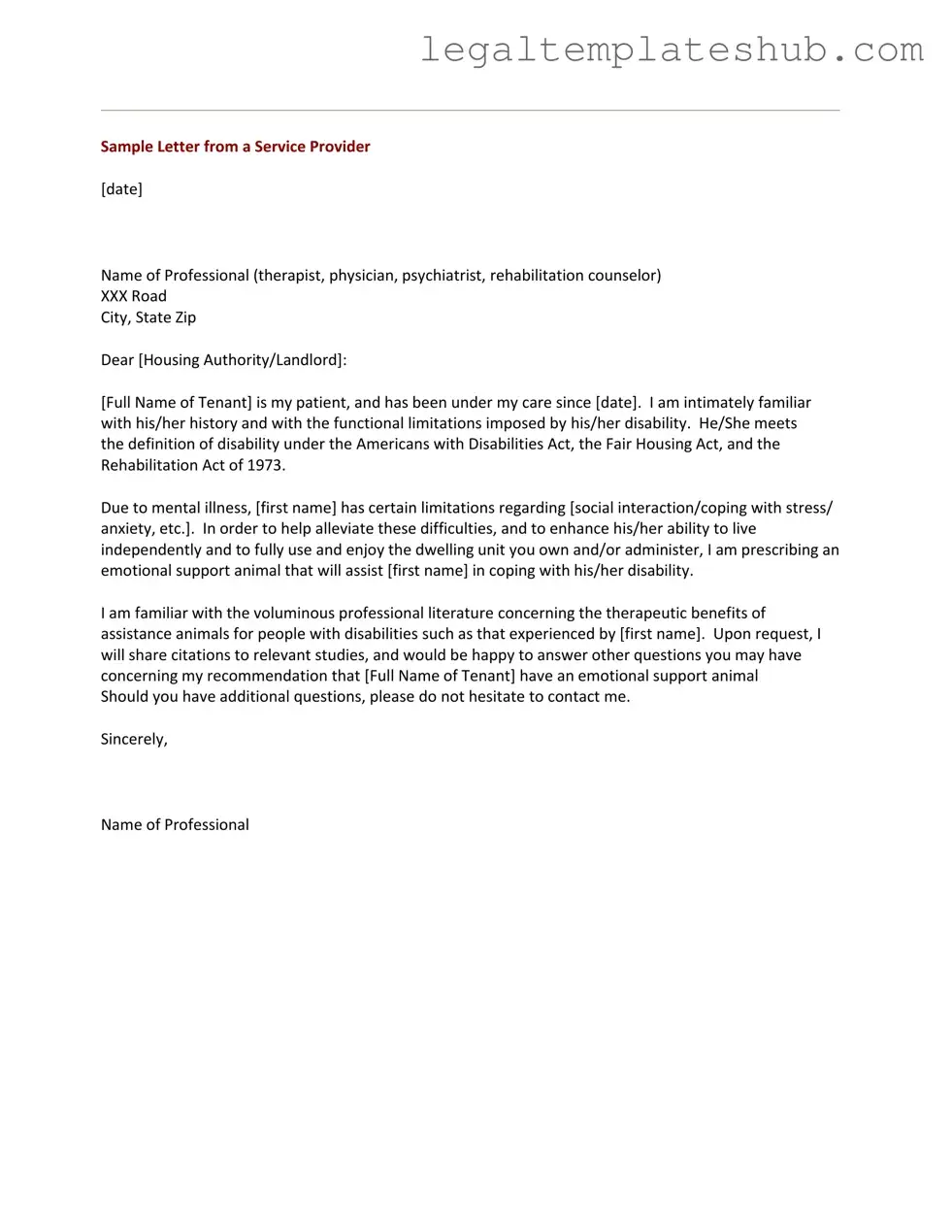Instructions on Filling in Emotional Support Animal Letter
Filling out the Emotional Support Animal Letter form is an important step for those seeking to establish the necessity of an emotional support animal. The process is straightforward, and following these steps will help ensure that all necessary information is included for a complete submission.
- Start with your personal information: Fill in your full name, address, phone number, and email address at the top of the form.
- Provide details about your mental health: Describe your emotional or psychological condition. Be clear and concise, focusing on how it affects your daily life.
- Include your healthcare provider’s information: Enter the name, title, and contact information of the licensed mental health professional who is supporting your request.
- State the need for an emotional support animal: Clearly explain how having an emotional support animal will help alleviate your symptoms or improve your well-being.
- Sign and date the form: Make sure to sign and date the form at the bottom to validate your request.
- Review for accuracy: Double-check all information for completeness and correctness before submitting the form.
Once the form is filled out, it will need to be submitted to the appropriate entity, whether that be a landlord, airline, or another organization that requires documentation for an emotional support animal. Ensure that you keep a copy for your records.
